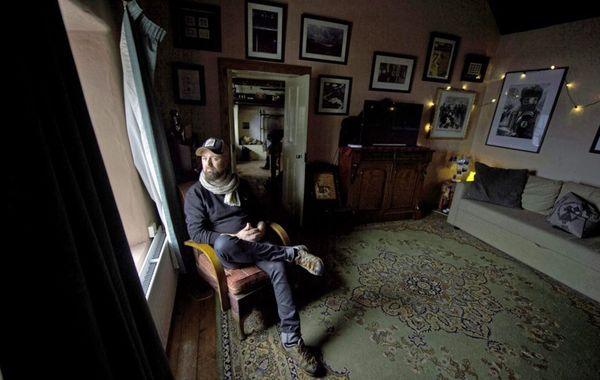Eye For Film >> Movies >> I Dream In Photos (2023) Film Review
I Dream In Photos
Reviewed by: Jennie Kermode

Everybody knows, these days, that soldiers can suffer from PTSD. It’s a recognised problem in emergency workers and healthcare professionals, as well as in survivors of wars and natural disasters – so why don’t we expect it in journalists? When dealing with already traumatised people in that role, one doesn’t want to be a burden, so there’s a tendency to try to set one’s own emotions aside. That’s what photographer Cathal McNaughton thought he was doing when rushing from one horrific situation to another in the course of his work. It was only when he was forced to stop and found himself with time on his hands that he began to fall apart.
If you recognise Cathal’s name, it’s likely because he won a Pulitzer Prize, and it was the Pulitzer Prize that screwed him up. That is, he had never before had to deal with fame, and it’s much easier to slip in and out of countries where one might be doing politically contentious work without it. That prize cost him his home in India, his relationship and many of his friends, as he was forced to go back to Ireland. Then both his parents fell ill in quick succession, and he felt compelled to stay. Before he knew it, he was unable to pick up a camera again.
Documentary team Ollie Aslin and Gary Lennon look at what this means for Cathal in his day to day life – one in which he still sees potential photographs everywhere he looks – and follow him through a gradual process of breaking down what has happened and moving towards recovery. Using his past work and video footage captured on some of his trips, they explore his past experiences. Some of his most powerful or personally meaningful photographs are discussed in depth.
“The sheer scale – it was Biblical,” Cathal says of what he saw in Bangladesh – thousands and thousands of Rohingya refugees seeking help, with nothing like enough infrastructure to support them. The footage shows little indigo tents clustered in muddy hills, surrounded by crowds of thin, exhausted looking people in beautiful, brightly coloured clothes. It was their silence, he recalls, that got to him. not a single child laughing. In what is perhaps the most striking of his images, a mother cradles her new-born child, the latter wrapped in a bright saffron shawl, face already deathly pale.
Back in Ireland, an exhibition of Cathal’s work is being prepared. It takes place in a large, echoey hall – not helpful where sound recording is concerned – helping us to recognise the disconnection between the world in which he’s lived and the world as most people looking at his photos understand it. Later, he stands in the sea, fishing, and talks about the technical side of his work, the importance of capturing action even in still shots, the way he moves with his camera. We see the way he holds his position, keeps his line steady as the waves press against him, and it’s the perfect visual metaphor.
Like many people with PTSD, Cathal worries that he’s a fraud, because he knows that other photographers have coped with seeing worse things. The personal nature of it is another thing he needs to accept – though one wonders, of course, if those other photographers are really coping as well as he assumes. He knows the limits of his role, his inability to help all those desperate individuals, but also the power that his images have to move people and, thereby, to create pressure for change. Aid goes to refugees because of the pictures people see. Politicians come under pressure from voters to end wars. They are far from useless. Aslin and Lennon convey this very effectively, without being too blunt. Meanwhile, a pointy-faced dog, white with brown patches, stays at Cathal’s side, paying close attention to everything he does, and it’s clear that at least somebody has known all along what he’s worth.
I Dream In Photos screened as part of the 2024 Glasgow Film Festival.
Reviewed on: 11 Mar 2024














